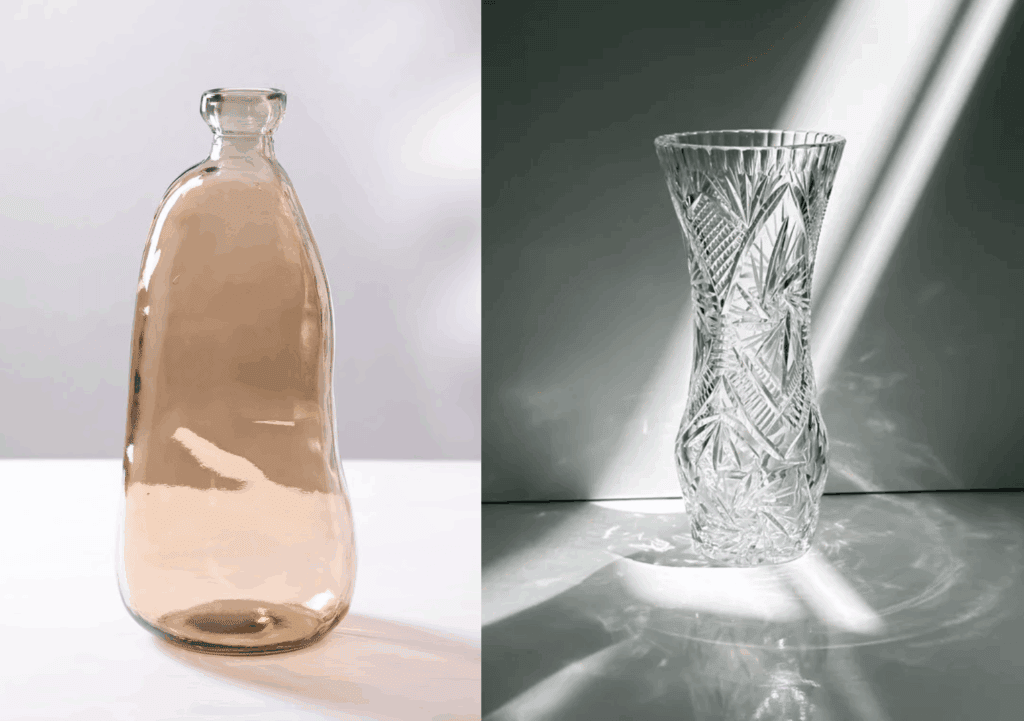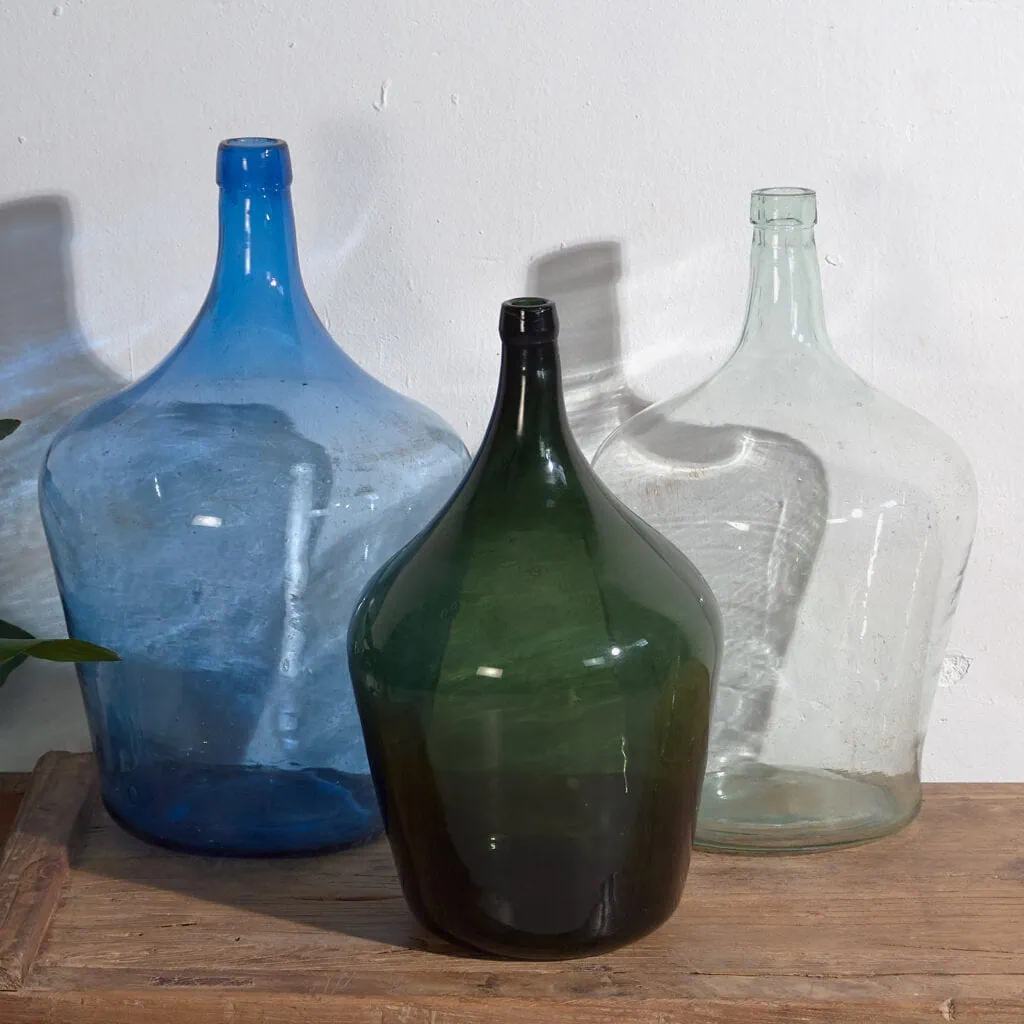In the world of antiques, each object tells a story through its materials and manufacture.
One of the most common, but also the most subtle, distinctions is that between glass and crystal. Although in everyday language they are used as synonyms, from a technical and historical perspective they represent different materials with very different properties and values.
The Fundamental Difference
The essential distinction between a glass and a crystal is of a molecular order, which determines all their characteristics.
- Glass: An Amorphous Solid
Scientifically, glass is classified as an“amorphous solid“. This means that its atoms and molecules lack an ordered, repeating structure; their arrangement is disorganized, similar to that of a liquid, but with such an extremely high viscosity that it behaves like a solid.
- The True Crystal: A Crystalline Solid
A crystal, in its strict scientific definition, is a“crystalline solid“. Its constituents are arranged in an ordered and periodic geometric pattern that extends in all three dimensions, forming a lattice. This structure is responsible for the defined geometric shapes of natural crystals, such as quartz, diamond or calcite, and for their exfoliation planes.

It is crucial to understand that, in the context of antiques and fine glassware, the term “crystal” (as in “crystal glass”) almost always refers to lead crystal, which, we shall see, is actually a type of high quality glass, and not scientific glass.
Common Glass
Ordinary glass, or soda-lime glass, is manufactured by melting a mixture of fundamental raw materials that allows it to be melted at high temperatures and molded by various techniques (blowing, pressing, etc.).
Identifying properties of common glass:
- Weight and Hardness: It is relatively light and hard.
- Brightness and Refraction: It has a more modest brightness and a low refractive index, so light passes through it without noticeable decomposition.
- Sound: When tapped gently, it produces a short, dull sound.
- Feel: Edges, especially on older pieces, tend to feel sharper.
- Color: It often has a slightly greenish or grayish tone when viewed edge-on, due to the iron impurities present in the unrefined sand of yesteryear.
At AMARU, we can find common glass in antique pieces such as pharmacy bottles, demijohns, vases and jars. Many of these pieces have bluish, greenish and brownish tones, which when reflected with natural sunlight create a magical scene.

Bohemian Crystal
Bohemian crystal is a type of glass that is considered crystal because its traditional manufacture includes lead oxide, which makes it brighter, heavier and more transparent than ordinary glass.
In addition, Bohemian Crystal is world famous for its innovative and vast range of intense colors and luxurious decorative techniques such as the application of enamels and gilding. This combination of qualities makes it unmistakable in pieces such as candelabras and chandeliers with carved prisms, goblets and vases finely frosted with gilding, or pieces in ruby red or cobalt blue.

Its exceptional properties derive directly from this composition:
- Clarity and Brightness: Lead oxide provides unparalleled clarity, brightness and purity.
- Sonority: Like other lead crystals, it is characterized by a clear and prolonged sound when tapped gently.
- Hardness and Carving: Although the addition of lead makes it softer for carving compared to ordinary glass, its fame in deep carving, grinding and engraving is due to master craftsmanship, which takes advantage of its excellent workability.
Understanding the distinction between glass and lead crystal is an invaluable tool for any antique hobbyist or collector. While the former is an amorphous solid, practical and functional, the latter is a sophisticated evolution of glass, enriched with lead to achieve unparalleled heights of beauty, brilliance and sonority.
The next time you hold a glass or admire an antique lamp, you will be able to appreciate not only its aesthetics, but also the deep material history embedded in its composition.